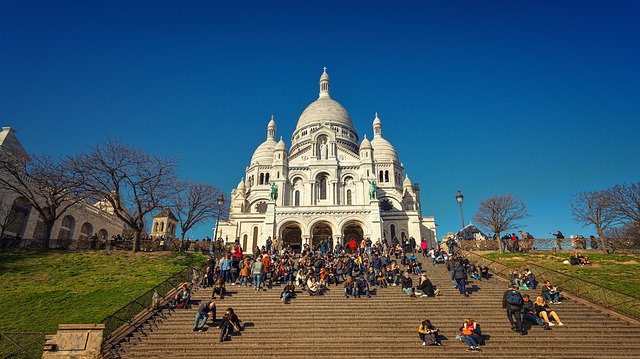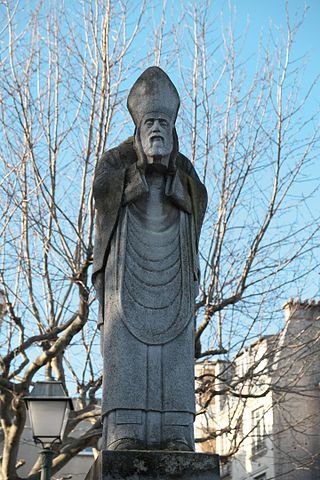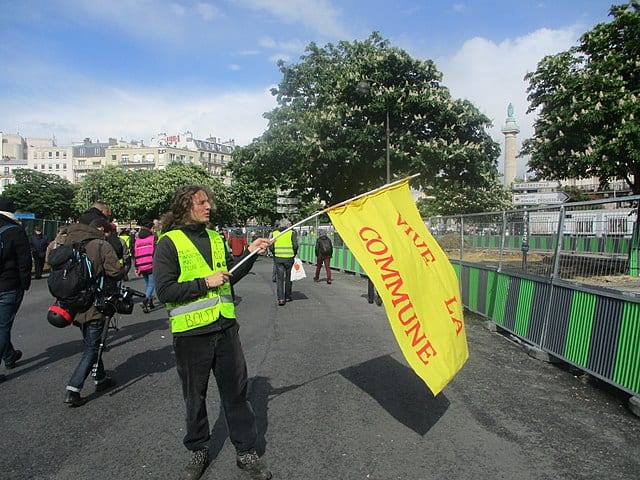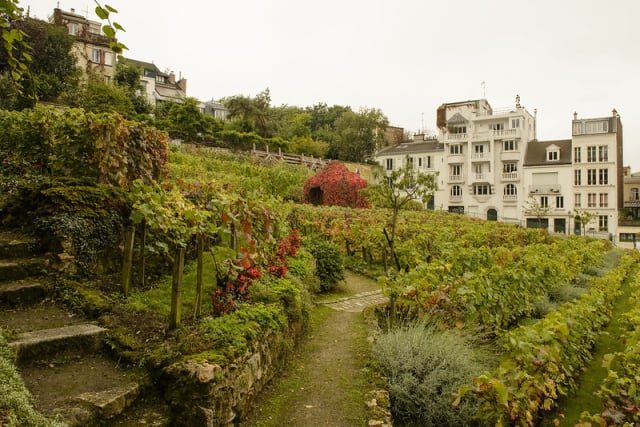Top 5 fun facts about Montmartre
Updated by Molli, 20/11/2019
Montmartre, in the eyes of the Parisians, is a haven of peace. It was once the artist quarter of the city, with big shots like Picasso and Van Gogh called home.
Many tourists will visit the Sacré-Coeur, the Moulin Rouge and the landmarks of Montmartre, but this Parisian neighborhood is so much more than that! I’ve lived here for some time now, and Montmartre is definitely my favorite part of the city.
Here, you’ll find narrow and winding streets, a really cool atmosphere and you can still find plenty of artists today.
Do you want to learn more? Here are my top 5 fun facts about Montmartre!
1. The origin of the name Montmartre
Historically speaking, Montmartre is very rich, which is why there are two rival theories out there as to where the name “Montmartre” came from. Montmartre was originally named “Mons Martis”, meaning the “Mount of Mars”. Later, it was christened to “Montmartre”, also known as “Mount of the Martyr”.
I want to tell you a bit more about the story of Saint Denis. On top of the hill of Montmartre, the first bishop of Paris, Saint Denis, was decapitated in 250 AD. During the time of the Roman empire, Christians were severely persecuted.
With this in mind, Saint Denis’s martyrdom may have inspired the name of the hill. Additionally, there is a pretty crazy story surrounding Saint Denis’s death.
As you can see in the photo of a statue of Saint Denis, he is depicted as holding his own head. This is because, at first, he was sentenced to be crucified on top of the hill. The only reason he got decapitated is because the soldier who was accompanying him got bored along the way.
But, Saint Denis was pretty upset about this. He liked the idea of dying like Jesus. So, he picked up his own head and continued walking to the top of the hill. That is what the legend says, anyways! There, he dropped dead, but his head rolled and rolled…to a point that was later declared sacred, and where they built a church to house his crypt.
Because he was such a determined man, and because he met a tragic fate like many famous Montmartrois (a nickname given to residents of Montmartre), I largely prefer the idea that Montmartre was named after him.
Come to Montmartre to pay a little visit to Saint Denis: in addition to his crypt, you can find him in the Square Suzanne-Buisson, which is a very typical Parisian park where you can see French people playing the pétanque, or, the Boules Game.
Practical information for visiting the Crypte du martyrium de saint Denis
Entry fee: Free
Opening hours: Friday 3pm-6pm
Address: 11 Rue Yvonne le Tac, 75018 Paris
Metro station: Abbesses
Practical information for visiting the Square Suzanne-Buisson
Entry fee: Free
Opening hours: Monday-Friday 8am-7:30pm, Saturday-Sunday 9am-7:30pm
Address: 7 bis rue Girardon, 75018 Paris
Metro station: Lamarck – Caulaincourt
2. Montmartre has always been a home to rebels
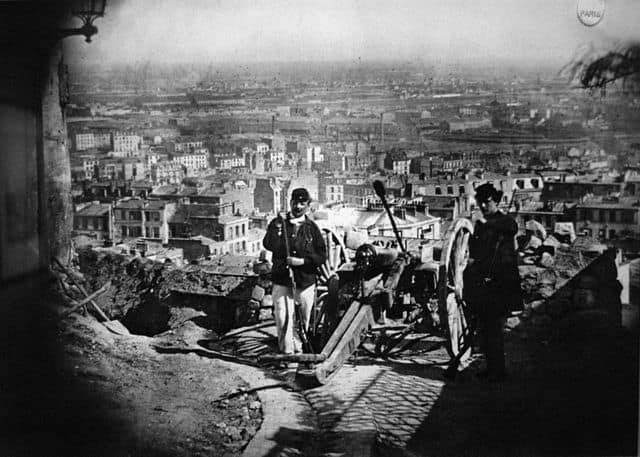
Montmartrois in front of a barricade on the rue de la Bonne, butte Montmartre, during la Commune de Paris in 1871 by BHVP/Roger-Viollet – WikiCommons
If you check out the history of Montmartre, you’ll see that most of the time, it is in conflict with the rest of Paris. The Montmartrois are different from typical Parisians, and they are proud to say so. For instance, in 1871, the people of Montmartre rebelled and created their own community, which is known as La Commune, and they were independent from the rest of the city for a little less than three months.
This may stem from the fact that Montmartre used to be village that was separate from the rest of Paris. In 1860, Napoleon III and Baron Haussmann decided to completely change that set up of the city. This included knocking down older buildings, installing large boulevards, and annexing surrounding villages to the city.
Until this point, Montmartre was a completely different town. The last mayor of Montmartre was named Jean-Baptiste Michel de Trétaigne, and after he died in 1861, there hasn’t been a mayor of the Parisian neighborhood since. Today, the mayor of the 18th arrondissement also presides over Montmartre, as that is where it is located! Un-officially (in the eyes of many Montmartrois at least!), Montmartre still is separate.
Montmartre has also experienced a lot of tragedy over the years. The French singer Dalida called Montmartre home, and she met her fate at a relatively young age, and we can’t forget all of the struggling artists that struggled to find homes and something to eat in the 19th and 20th centuries.
There are fewer and fewer traditional Montmartrois today: many of today’s inhabitants of Montmartre are known as bobos, which stands for bourgeois bohemians. Bobos are people who make a lot of money but who pretend to live the philosopher’s life. This is why the “older” Montmartrois, the ones who believe they are the “true” ones, want to keep their neighborhood, and they protest through graffiti and street art.
A fun fact about Montmartre is that, in many places, you’ll see tags saying “Bobos, cassez-vous”, which is a harsh way to say in French: bobos, get the hell out.
In this photo, you can see a protester in Paris waving a flag that says “Vive la Commune”, which basically means “Hurrah to the Revolution.” The Montmartrois are quite revolutionary and very attached to their independence, and they will be glad to tell you about what they think and what they love about Montmartre!
3. Montmartre also belongs to the artists
Today, it is very expensive to live in Montmartre, but for a long time, it was a working-class neighborhood. This is what drew a lot of the artists of the 19th century to the area, who, as you know, often struggled to make ends meet during their lifetimes.
Beyond the economic argument, they were also inspired by the colors and the rural aspect of Montmartre. One of my favorite facts about Montmartre concerns Picasso and a cabaret called Au Lapin Agile. Whenever he went there to have lunch, Picasso paid with a drawing!
The owner accepted them as payment at first, but he soon began asking Picasso why he didn’t sign his drawings, which would have obviously made them more valuable. Picasso supposedly answered: “Because I only want to buy lunch, not your whole restaurant.” Ouch! I love Picasso’s art, but he sounds like he was a real jerk.
Au Lapin Agile is also known for being the place where some serious antics went down. In order to make fun of the Impressionists, some Cubists decided to take a donkey, dip it’s tail into yellow paint, and then let him shake it on a canvas…and then called the whole thing an impressionist painting. Again, jerks!
The owner, unfortunately, later sold the Picasso drawings – but Au Lapin Agile is still a nice place to eat in Montmartre, is still pretty authentic. It used to be called the “Assassin’s Cabaret,” as it was a hang out for criminals, but it doesn’t merit this nickname anymore.
Practical information for visiting Au Lapin Agile
Opening hours: Tuesday-Sunday 9pm-1am, closed Monday
Address: 22 Rue des Saules, 75018 Paris
Metro station: Lamarck – Caulaincourt
4. Montmartre has its own vineyard
Just next door to the Lapin Agile, is an unmissable spot in Montmartre: the Clos Montmartre vineyard, which is the only vineyard left in Paris.
A fun fact about this Montmartre wine is that even though it is a very expensive wine (about 45 euros a bottle), it is actually not that tasty!
Basically, it is the most expensive bad wine there is. To make good wine, you need good quality air and a large amount of sun; and those are two things that Paris is seriously lacking.
But I still recommend that you go and check out the vineyard. You have to remember though, that Montmartre wine is better on top of a chimney than in a glass. Mostly, we keep it as a tradition and all the money is given to charity.
Practical information for visiting the Clos-Montmartre vineyard
Entry fee: The vineyard is closed to the public, but you can walk very close to the vines to get a closer look! The vineyard also opens it’s doors for a few weeks during the Fête des vendanges to celebrate the grape harvest. Click here for more information!
Opening hours: 24/7
Address: Rue des Saules, 75018 Paris
Metro station: Lamarck – Caulaincourt
5. The hill of Montmartre and its transportation
Last but not least of my top 5 fun facts about Montmartre is the practical aspect of the hill that the neighborhood sits upon.
The landscape of Montmarte is part of what makes it so pretty, with its curves and its narrow streets. But it makes it kind of complicated to get to the top, as you can imagine! There is only one metro station located on the hill, which is called the Abbesses metro station.
P.S., if you do decide to take this station to get to Montmartre, prepare yourself for the climb up the stairs! This metro station is the deepest one in Paris, it is the equivalent of a fifteen-storey building. Don’t worry though, there is always the option to take the elevator!
There is one bus especially made for Montmartre: the Montmartrobus. That being said, walking or biking there is fun and a more authentic experience. However, it is almost impossible to find a Velib’ (the public shared bike system in Paris) in Montmartre, as very logically, everyone takes bikes to get down, but nobody takes them back up!
Years back, if you were brave enough to take the Velib’ up to Montmartre, they used to offer you an extra free 40 minutes, as an award. Learn more about biking in Paris in this article.
Nonetheless, starting on January 2018, certain Velib’s are now equipped with a battery. Going up the hill is easier than ever! This new feature, (plus the Montmartrobus for the lazier amongst you), means that there are no more excuses not to go to the top of the hill and admire the magnificent view it offers of Paris!
Conclusion
There you have my top 5 fun facts about Montmartre! I hope you’ve enjoyed reading this article and that it has been helpful. Montmartre is amazing, and there are so many things to do and discover in this area. Every day new pieces of art and surprises appear on the walls. It is truly an artistic and original place to visit. Don’t hesitate to contact us if you need further information about anything! See you soon in Montmartre!
If you’re interested in joining us on a walking tour in Montmartre, we can help you there too! Click here to learn more about all of the touring options in this Parisian neighborhood, and elsewhere in the French capital!
Planning a trip to Paris ? Get ready !
These are Amazon’s best-selling travel products that you may need for coming to Paris.
Bookstore
- The best travel book : Rick Steves – Paris 2023 – Learn more here
- Fodor’s Paris 2024 – Learn more here
Travel Gear
- Venture Pal Lightweight Backpack – Learn more here
- Samsonite Winfield 2 28″ Luggage – Learn more here
- Swig Savvy’s Stainless Steel Insulated Water Bottle – Learn more here
Check Amazon’s best-seller list for the most popular travel accessories. We sometimes read this list just to find out what new travel products people are buying.





